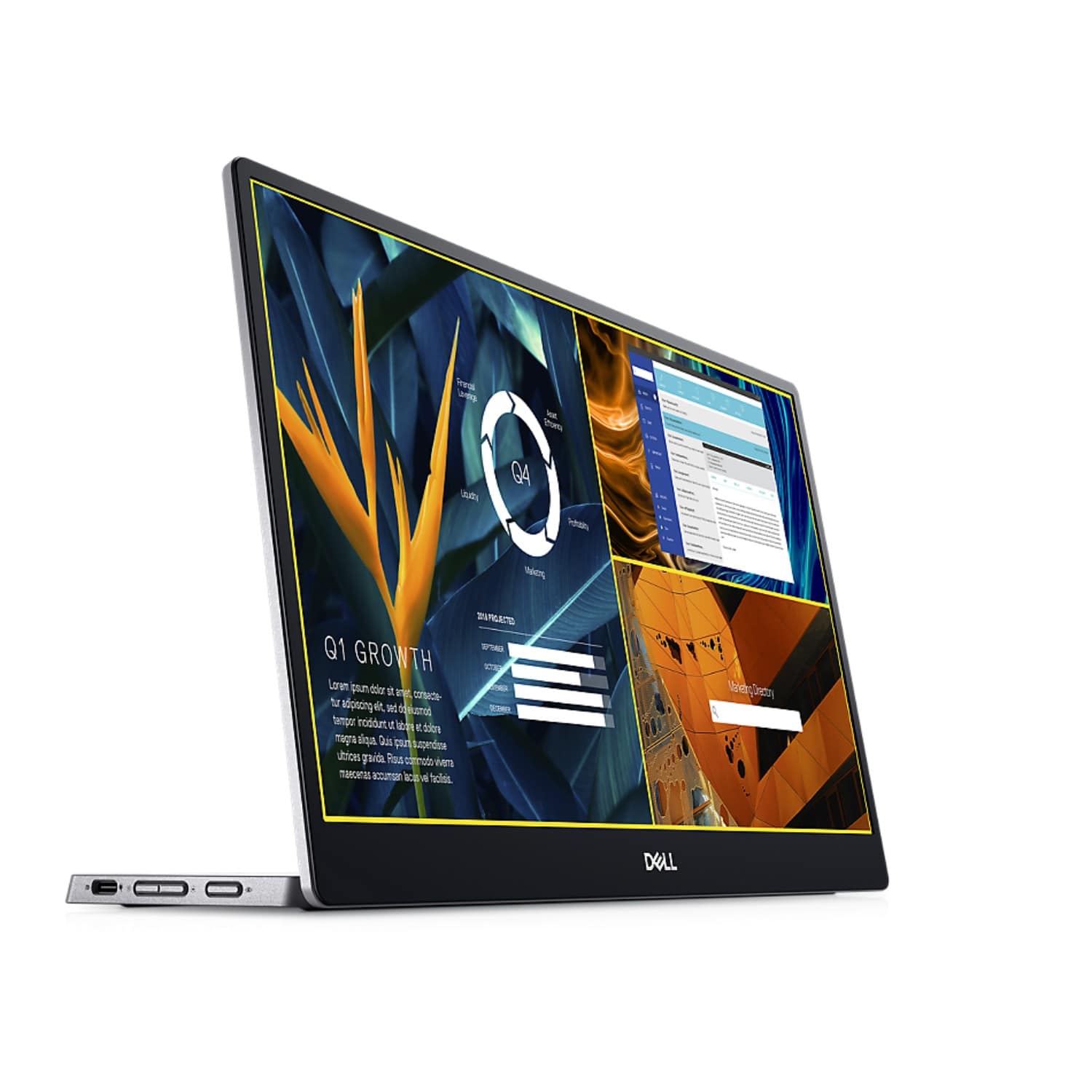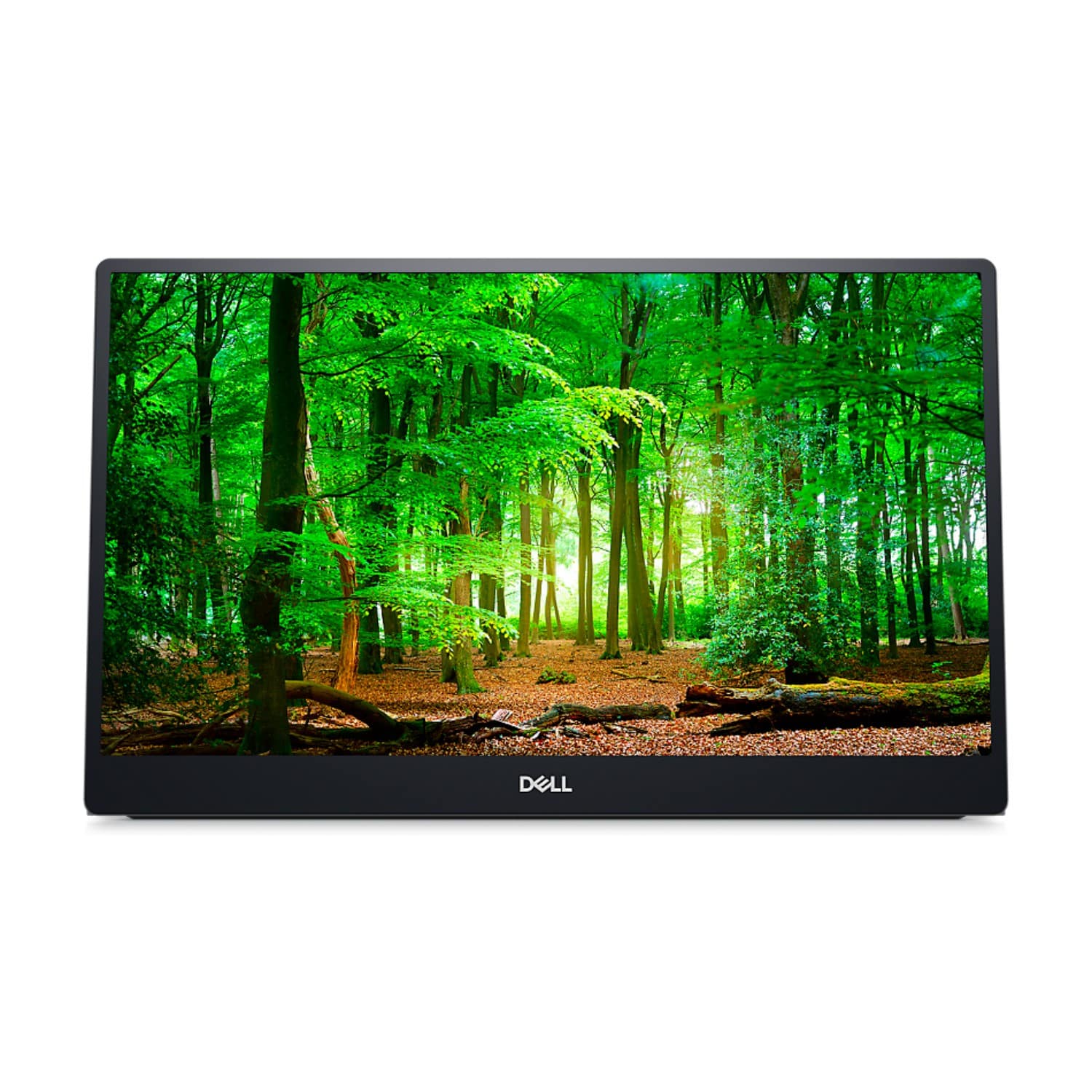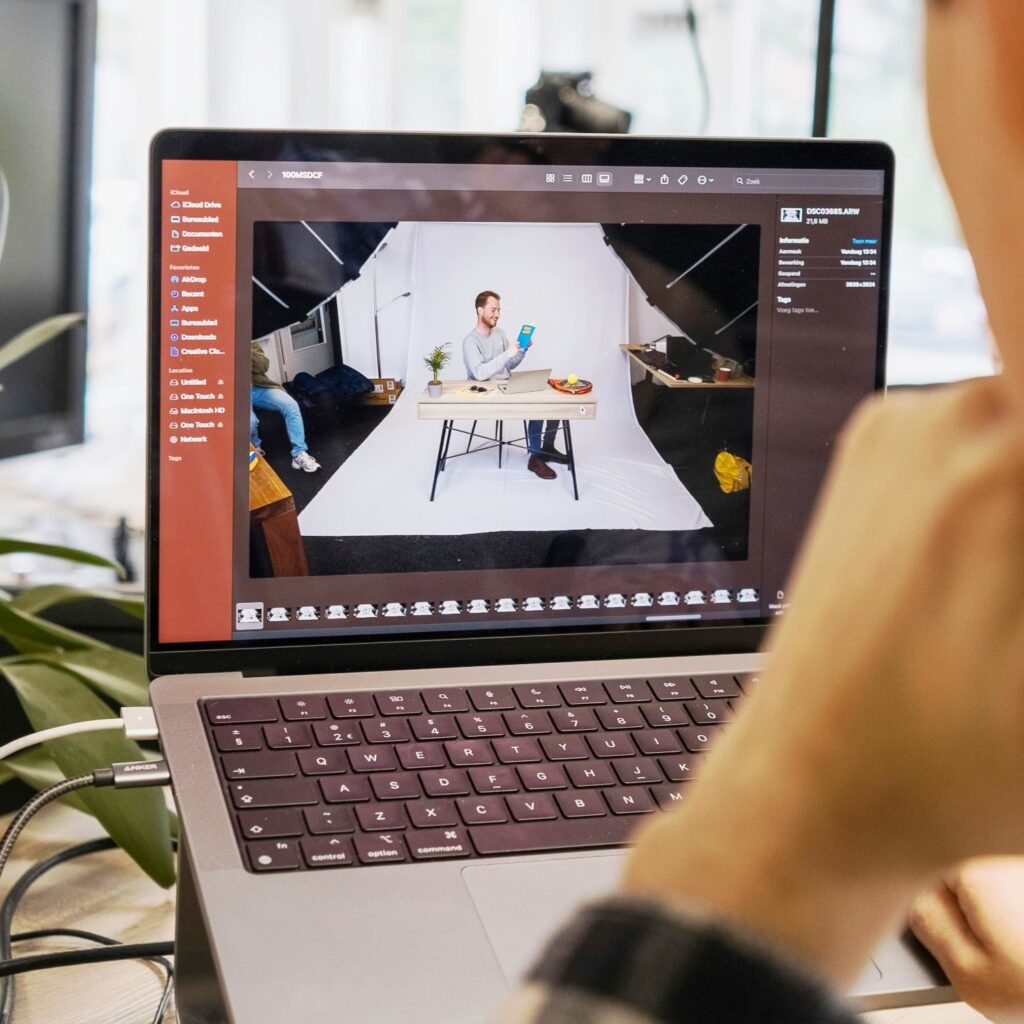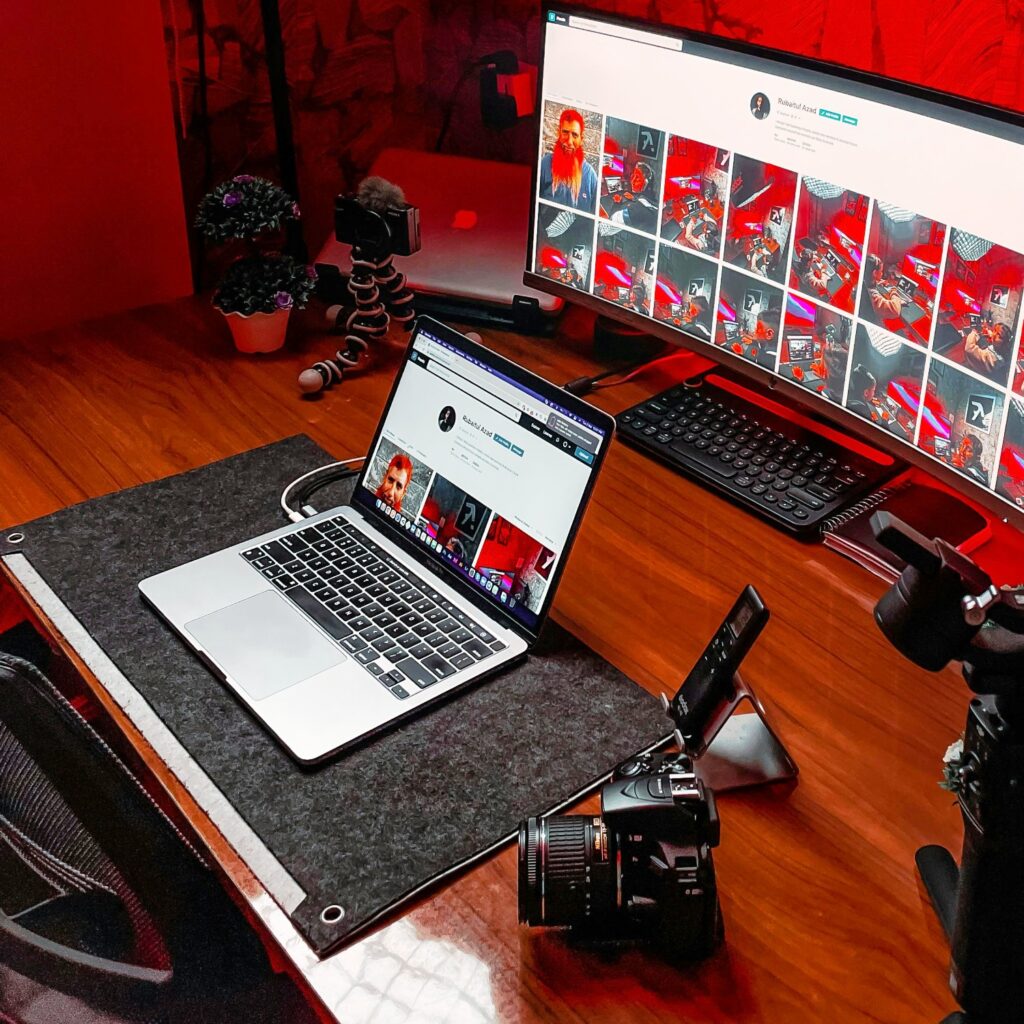Looking for the best portable monitors to enhance your work productivity on the go with a laptop? A portable monitor is a great investment to boost your work efficiency and enjoy gaming anywhere.
When it comes to the best portable monitors for laptop users, there are several top contenders that offer excellent features for work and gaming. ASUS ZenScreen and ASUS ROG Strix are among the best portable monitors with high refresh rates and great viewing angles.
Dell P1424H is another top pick for those seeking a portable display that delivers exceptional performance. With features like two USB-C ports and the ability to switch to portrait mode, it offers versatility for various tasks.
For gamers looking for the best portable gaming monitors, options like 4K monitors and high refresh rate displays are ideal for an immersive gaming experience. Consider monitors with OLED panels for stunning visuals.
Having a second screen with your laptop allows for increased productivity and multitasking capabilities. Desktop monitors that can serve as a portable extension to your laptop screen are valuable assets for professionals on the move.
Remember, investing in a quality portable monitor may earn you better work efficiency and a more enjoyable gaming experience while you’re away from your desktop setup.
Can You Use a Portable Monitor for a Laptop?
Yes, you can use a portable monitor with a laptop. Portable monitors are designed to be lightweight and easily connect to various devices, including laptops, through interfaces like HDMI, USB-C, or DisplayPort.
This setup can be convenient for extending your laptop’s screen space when you need to work with multiple applications simultaneously or have a larger display for presentations or entertainment while on the go.
Just ensure that your laptop has the necessary ports or adapters to connect to the portable monitor you choose.
Why You Need a Portable Monitor for Laptop Work?
Having a portable monitor for your laptop can greatly enhance your productivity and overall work experience.
Here are some reasons why you should consider investing in a portable monitor:
- Enhanced Productivity: A portable monitor provides you with extra screen space to multitask efficiently, allowing you to work on multiple applications simultaneously.
- Improved Viewing Experience: The best portable monitors offer high refresh rates and excellent viewing angles, making them ideal for tasks that require precision and clarity.
- Portability: With a portable monitor, you can easily connect it to your laptop and work from anywhere, whether you’re in a coffee shop, on a plane, or at home.
- Gaming: Many portable monitors are designed for gaming, offering features like high refresh rates and vibrant displays, making them perfect for gaming on the go.
- Travel-Friendly: Portable monitors are lightweight and compact, making them easy to carry in your laptop bag or backpack, ensuring you always have an extra screen when you need it.
- Connectivity: Most portable monitors come with multiple USB-C ports, allowing you to connect them to your laptop without the need for additional adapters or cables.
- Versatility: Some portable monitors can be rotated into portrait mode, giving you the flexibility to adjust the screen orientation based on your preference.
- Compatibility: Portable monitors are compatible with a wide range of devices, including MacBook Pro, ASUS ZenScreen, Lenovo ThinkVision, and more.
A portable monitor is a valuable tool for anyone looking to boost their productivity, enhance their gaming experience, or simply have the convenience of a second screen on the go.
Ultimate Guide to Choosing the Best Portable Monitor
Choosing the best portable monitor depends on several factors, including your specific needs, preferences, and budget.
Here’s an ultimate guide to help you navigate through the selection process:
- Screen Size and Resolution: Consider the size and resolution of the monitor based on your usage requirements. Larger screens provide more viewing area, while higher resolutions offer sharper image quality. Common resolutions include Full HD (1920×1080) and 4K (3840×2160).
- Portability: Look for a monitor that is lightweight, slim, and easy to carry. Portability is crucial if you plan to travel frequently with your monitor. Consider factors like thickness, weight, and included protective covers or cases.
- Connectivity Options: Check the available connectivity options on both the monitor and your laptop. Most portable monitors support HDMI, USB-C, and sometimes DisplayPort connections. Ensure compatibility with your laptop’s ports or invest in adapters if needed.
- Power Source: Determine how the monitor is powered. Some models draw power from the laptop via USB-C, while others require a separate power adapter. USB-powered monitors are more convenient for travel but may offer lower brightness levels.
- Panel Type: Choose between different panel types, such as IPS (In-Plane Switching) for better color accuracy and viewing angles, TN (Twisted Nematic) for faster response times, or VA (Vertical Alignment) for deeper blacks and better contrast ratios.
- Refresh Rate and Response Time: If you plan to use the monitor for gaming or multimedia purposes, consider refresh rate (measured in Hertz) and response time. Higher refresh rates provide smoother motion, while lower response times reduce motion blur.
- Adjustability: Look for features like tilt adjustment or built-in stands to customize the viewing angle for optimal comfort. Some monitors also support VESA mounting for compatibility with monitor arms or stands.
- Additional Features: Consider extra features such as built-in speakers, touchscreen functionality, HDR (High Dynamic Range) support, or compatibility with stylus pens for drawing or note-taking.
- Brand Reputation and Reviews: Research reputable brands known for producing high-quality portable monitors. Read customer reviews and professional evaluations to gauge overall performance, reliability, and customer satisfaction.
- Price and Warranty: Set a budget based on your requirements and compare prices across different models. Consider the warranty duration and terms provided by the manufacturer for added peace of mind.
By considering these factors, you can narrow down your options and choose the best portable monitor that meets your needs and preferences.
Don’t forget to read user reviews and testimonials to gather real-world insights before making your final decision.
How to Choose the Best Portable Monitor for Your Specific Needs?
When looking for the best portable monitor that suits your specific needs, there are several factors to consider.
- Consider the purpose of use for your portable monitor, whether it be for gaming, work, or travel.
- For gaming enthusiasts, the best portable monitors are those with high refresh rates, such as the 300Hz portable monitor, providing seamless gameplay.
- If you need a monitor for work or general use, opt for a portable monitor that offers good screen and color accuracy.
- When it comes to travel monitors, look for lightweight and compact options that are easy to carry around.
- For those on a budget, there are excellent options available in the market for budget portable monitors that still offer decent performance.
- Connectivity is essential, so choose a portable monitor that can easily connect to your laptop or gaming laptop.
- Consider the power source required for the monitor, especially if you plan to use it outdoors or while traveling.
- OLED screens provide vibrant colors and deep blacks, making them a great choice for those who prioritize display quality.
In addition to your laptop, a portable monitor can be a useful addition to your setup, offering extra screen space when needed.
When making your decision, think about how you will use your portable monitor and choose one that best fits your requirements.
Best Portable Monitors for Working on the Go
When selecting a portable monitor for working on the go, you’ll want something that balances portability, connectivity, and productivity features.
Here are some of the best portable monitors suited for mobile work:
- ASUS ZenScreen MB16AC: This 15.6-inch Full HD (1920×1080) monitor is slim, lightweight, and comes with a smart case that doubles as a stand. It supports USB-C and USB-A connectivity, making it compatible with a wide range of laptops. The IPS panel offers good color accuracy and viewing angles.
- AOC I1601FWUX: Another 15.6-inch Full HD portable monitor, the AOC I1601FWUX features a USB-C connection for both power and video, eliminating the need for additional cables. It’s slim, lightweight, and comes with a foldable stand. The IPS panel delivers vibrant colors and wide viewing angles.
- Lenovo ThinkVision M14: With its 14-inch Full HD display and USB-C connectivity, the Lenovo ThinkVision M14 is highly portable and versatile. It offers a unique tilt-adjustable stand design and a protective sleeve for easy transport. The IPS panel provides excellent color accuracy and brightness.
- HP EliteDisplay S14: This 14-inch Full HD portable monitor from HP features USB-C connectivity for power and video transmission, ensuring compatibility with modern laptops. It comes with a protective cover that doubles as a stand, and the IPS panel offers crisp visuals and wide viewing angles.
- ViewSonic VG1655: The ViewSonic VG1655 is a 15.6-inch Full HD portable monitor with USB-C and Mini HDMI connectivity options. It boasts a sleek design, adjustable stand, and dual integrated speakers, making it a versatile choice for mobile professionals. The IPS panel delivers accurate colors and wide viewing angles.
- GeChic 1101P: This 11.6-inch portable monitor offers a compact solution for mobile work. It features multiple connectivity options, including HDMI, VGA, and USB-C. Despite its small size, the GeChic 1101P delivers decent image quality with its IPS panel and supports touchscreen functionality.
When choosing the best portable monitor for working on the go, consider factors such as screen size, resolution, connectivity options, portability, and additional features like adjustable stands or protective covers.
Evaluate your specific needs and preferences to find the perfect balance between performance and convenience.
Portable Monitors for Gaming and Media Consumption
When it comes to portable monitors for gaming and media consumption, finding the best option can greatly enhance your experience. For gaming and media consumption on the go, you’ll want a portable monitor that offers a balance of performance, immersion, and portability.
- High Refresh Rate: Look for portable monitors with high refresh rates, ideally 120Hz or above, for smoother gaming experiences with reduced motion blur.
- Full HD Resolution: Opt for monitors with Full HD (1920×1080) resolution to ensure crisp and clear visuals for gaming and media consumption.
- Multiple Connectivity Options: Choose monitors that offer various connectivity options such as HDMI, DisplayPort, and USB-C to ensure compatibility with gaming consoles, laptops, and other devices.
- Slim and Lightweight Design: Portable monitors should be slim and lightweight for easy transportation, whether you’re gaming on the go or watching movies during travel.
- Built-in Speakers or Audio Output: Consider monitors with built-in speakers or audio output ports for immersive gaming experiences or media consumption without the need for external speakers.
- Adjustable Stand or Protective Cover: Some portable monitors come with adjustable stands or protective covers that double as stands, providing flexibility in positioning and protecting the screen during transportation.
- Responsive Panel Technology: Look for monitors with fast response times and panel technologies like IPS or TN for smooth gaming experiences with minimal input lag and ghosting.
- HDR Support (optional): If you value high dynamic range (HDR) content, consider monitors that support HDR for enhanced contrast and color reproduction in compatible games and media.
You can choose a portable monitor that suits your gaming and media consumption needs while maintaining portability and convenience.
By choosing the right portable monitor, you can enjoy immersive gaming experiences, enhanced media consumption, and increased productivity on the go.
Exploring the Best Lightweight Portable Monitor Options
When searching for the best lightweight portable monitor options, consider factors like screen size, resolution, connectivity, and overall portability.
Here’s a breakdown of some excellent choices:
- Screen Size: Opt for a size that balances portability and usability. Common sizes range from 13 to 15.6 inches.
- Resolution: Look for monitors with at least Full HD (1920×1080) resolution for sharp visuals.
- Weight: Choose monitors that are lightweight, ideally under 2 pounds (about 0.9 kg), for easy portability.
- Connectivity: Ensure compatibility with your devices. USB-C, HDMI, and DisplayPort are common connection options.
- Power Source: Consider whether the monitor is powered via USB or requires a separate power adapter.
Here are some lightweight portable monitor options:
- 13.3-inch Full HD USB-C Portable Monitor: This slim and lightweight monitor offers Full HD resolution and USB-C connectivity for both power and video transmission. It’s highly portable and suitable for on-the-go productivity.
- 14-inch Portable Monitor with HDMI: With a 14-inch display and HDMI connectivity, this monitor provides versatility for connecting to various devices. It’s lightweight and compact, making it ideal for travel.
- 15.6-inch Portable Monitor with USB-C and Mini HDMI: This larger monitor offers a spacious screen while remaining lightweight and portable. It features USB-C and Mini HDMI ports for connectivity and can be easily packed for travel.
- Ultra-Slim 13.3-inch Portable Monitor: This ultra-slim monitor weighs less than a pound and offers Full HD resolution. It’s designed for maximum portability, making it an excellent choice for frequent travelers.
- 15.6-inch Touchscreen Portable Monitor: If you need touch functionality on the go, consider a lightweight touchscreen monitor. This option provides both portability and interactive capabilities for various tasks.
When choosing a lightweight portable monitor, prioritize features that align with your specific needs, such as connectivity options, screen size, resolution, and portability.
Additionally, read reviews and consider user feedback to ensure the monitor meets your expectations for performance and reliability.
Is It Worth Getting an External Monitor for a Laptop?
Whether it’s worth getting an external monitor for your laptop depends on your specific needs, work habits, and preferences. Here are some factors to consider when making this decision:
- Increased Productivity: An external monitor can significantly increase your productivity by providing additional screen. With more space for windows and applications, multitasking becomes easier, allowing you to work more efficiently.
- Better Ergonomics: Using an external monitor allows you to position the screen at the optimal height and angle for improved ergonomics. This can help reduce neck and eye strain, especially during long work sessions.
- Enhanced Viewing Experience: External monitors often offer better display quality, including higher resolutions, improved color accuracy, and larger screen sizes. This can result in a more enjoyable and immersive viewing experience, whether you’re working, watching videos, or gaming.
- Flexibility and Versatility: Having an external monitor provides flexibility to customize your workspace according to your preferences. You can easily connect and disconnect the monitor as needed, allowing you to work comfortably in different environments.
- Collaboration and Presentations: An external monitor is useful for collaboration and presentations. You can share your screen with colleagues or clients during meetings, presentations, or workshops, enhancing communication and collaboration.
- Compatibility with Desktop Accessories: Using an external monitor with your laptop allows you to connect additional peripherals such as a keyboard, mouse, or docking station, creating a more desktop-like experience when needed.
However, there are also considerations to keep in mind:
- Cost: External monitors can be an additional expense, especially if you opt for higher-end models with advanced features. Consider your budget and whether the investment aligns with your needs and priorities.
- Portability: If you frequently work in different locations or travel often, carrying an external monitor with your laptop may not be practical. In such cases, you may prefer the portability of a single, all-in-one device.
- Space Constraints: If you have limited desk space or work in a compact environment, adding an external monitor may not be feasible or practical.
Ultimately, whether it’s worth getting an external monitor for your laptop depends on your individual circumstances and preferences. If you value increased productivity, better ergonomics, and enhanced viewing experiences, investing in an external monitor can be a worthwhile decision.
However, if portability and budget constraints are significant factors for you, you may find that sticking with your laptop’s built-in display is sufficient for your needs.
Does an External Monitor Improve Laptop Performance?
No, an external monitor does not directly improve the performance of your laptop. The performance of your laptop is primarily determined by its internal hardware components, such as the CPU, GPU, RAM, and storage.
However, an external monitor can indirectly contribute to a better overall user experience and productivity, which may give the impression of improved performance. Here’s how:
- Multitasking: With an external monitor, you have more screen to work with. This allows you to multitask more efficiently by having multiple windows or applications open simultaneously without cluttering your workspace. While this doesn’t impact the laptop’s performance directly, it can enhance your workflow and productivity.
- Enhanced Viewing Experience: External monitors often offer larger screen sizes, higher resolutions, and better color accuracy compared to laptop displays. This can result in a more comfortable and enjoyable viewing experience, especially for tasks like photo or video editing, design work, or watching multimedia content.
- Improved Ergonomics: Using an external monitor allows you to position the screen at the optimal height and angle for better ergonomics. This can help reduce strain on your neck, shoulders, and eyes, resulting in a more comfortable and productive work environment.
- Extended Display Options: Some external monitors support advanced features like dual-screen or extended display modes, allowing you to extend your desktop across multiple screens. This can be particularly useful for tasks that require working with large datasets, comparing documents side by side, or giving presentations.
While an external monitor doesn’t directly impact the performance of your laptop’s internal hardware, it can enhance your overall productivity, comfort, and user experience.
It’s important to ensure that your laptop’s hardware meets your performance requirements for the tasks you need to accomplish.
Should You Get a Portable Monitor for My Laptop?
Deciding on a portable monitor for your laptop depends on your needs. Portable monitors can boost productivity by providing extra screen space for multitasking, making them ideal for professionals on the move or those needing dual-screen setups.
Their lightweight and compact design offer convenience for travel or working in different locations. However, consider the cost and compatibility with your laptop before purchasing. Ensure the monitor aligns with your budget and connects seamlessly with your device.
Additionally, evaluate your workspace’s available space; if it’s limited, a portable monitor might not be practical.
Portable monitors provide versatility and convenience, offering a flexible solution for professionals seeking enhanced productivity and improved multitasking capabilities on the go.
Ultimately, weigh the benefits of enhanced productivity and flexibility against potential constraints. If you frequently work remotely or require additional screen, a portable monitor could significantly enhance your workflow and overall experience.
Connect your laptop to the best portable monitor for enhanced productivity and multitasking capabilities, offering portability and convenience.





